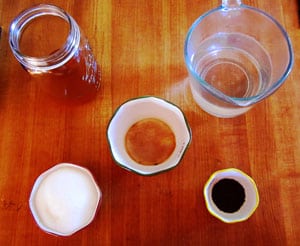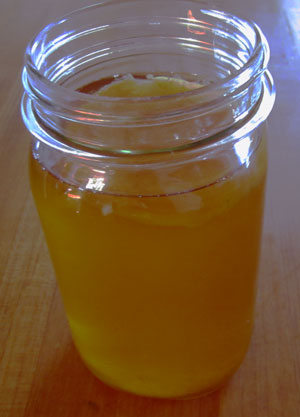This post contains affiliate links.
I am an advocate for fermentation I believe that it is a healthy practice which has helped generations of people preserve food staples, infuse flavors, derive health benefits and help digest hard to break down foods.
Since the widespread use of refrigeration we have become lazy and commercialized. We want things instantly without preparation. This led to the rise of fast food and prepared meals which are full of chemicals, flavor enhancers and various preservatives.
But the worst thing which has happened in my opinion is what I call fear mongering advertisement. It goes on in all areas of commercialization but with the most intensity in the food industry.
As a result it seems we are afraid to eat anything which is not sealed in a plastic bag, frozen, canned or bought from a commercial source.
But most processed foods bought at a grocer are not as good for you as those which are home made.
This leads me to Kombucha. I love the way Kombucha makes me feel, I like the taste and I love that I can make it the way I like it. I can let it become tart, leave it sweet, flavor it in a second fermentation and even make it into vinegar.
Whatever your prefrence, making it yoursself gives you the greatest opportunity to have kombucha just as you like it.
That said here is a simple basic recipe for you to start with.
Equipment:
- One glass jar (at least a quart)
- Cloth to cover the jar with an elastic band to secure it
Ingredients:

- Tea leaves or bags
- Sugar
- Filtered water
- Raw kombucha
- One SCOBY
Traditionally kombucha is made with black tea but it can be made with any type of tea you choose, black, green, oolong, white even herbal. Each of these versions have different flavors and properties.
Your choice of sweetener is also up to you. You can use white, brown, unrefined, fructose or honey (don’t believe me then research Jun). The SCOBY does not care where it gets its fuel from, it is sort of like asking what kind of wood a fire will burn. It must have calories in it (food energy) so diet sugar substitutes will not work.
Instructions:
Make the tea. You can make it as strong or weak as you like. I use ½ cup of tea leaves per two gallon batch but feel free to experiment with the strength of the tea.
Add the sweetener while the tea cools. The amount of sugar in the tea will dictate the acidity the kombucha can achieve, you must add enough sugar to feed the culture enough so they can acidify the tea. Use at least a third of a cup of sugar per quart sized jar.
Strain out the tea leaves or remove the bags and pour it into the jar.
Let it cool to room temperature, then add ¼ the volume of kombucha to the tea.
Place the SCOBY on top of the liquid then secure the cloth with the elastic band.
Wait….
In about ten days or so the AAB will have converted some of the sugar into acetic acid. Begin tasting it by placing a straw under the SCOBY. When it is the desired tanginess you can pour out the finished kombucha and place into the fridge. Make a new batch by leaving ¼ of the kombucha in the jar with the SCOBY and add some more sweet tea.
You can drink the kombucha right away or make it into a soda.

